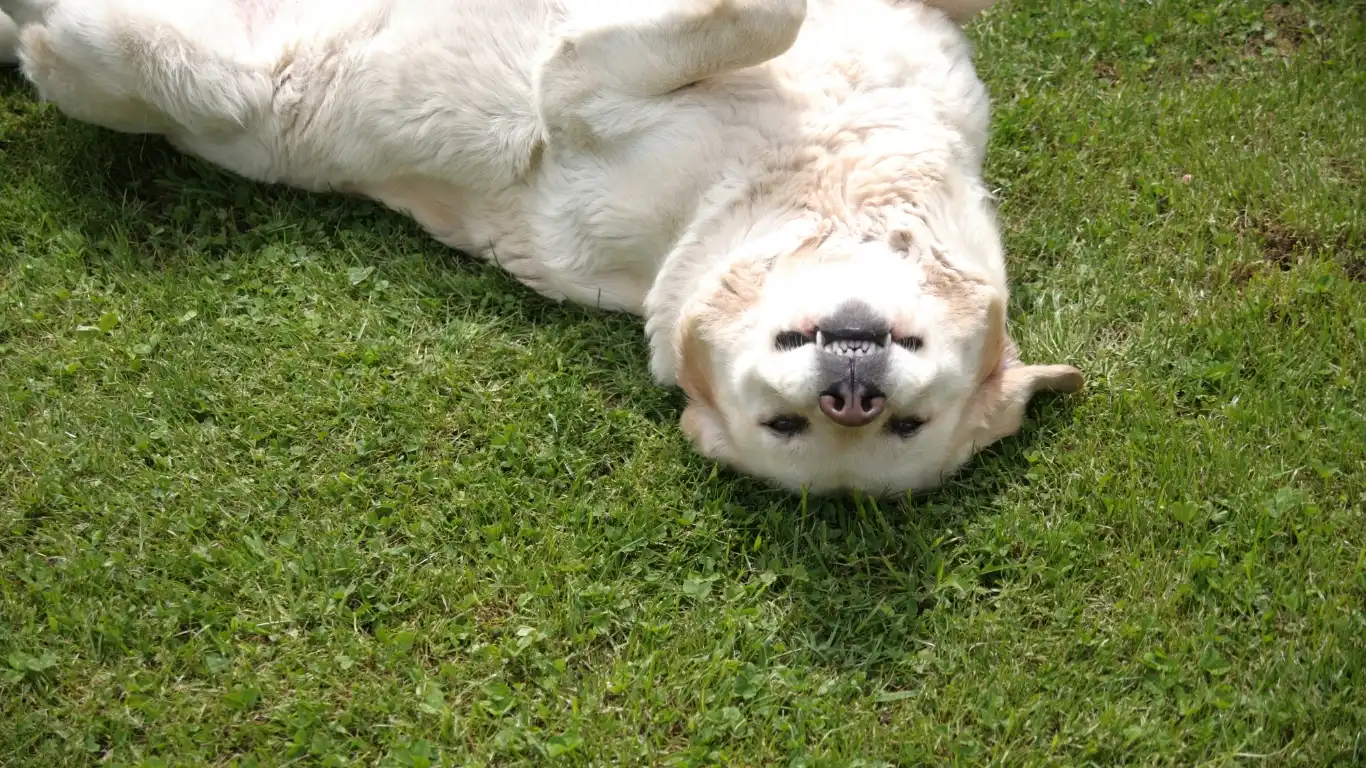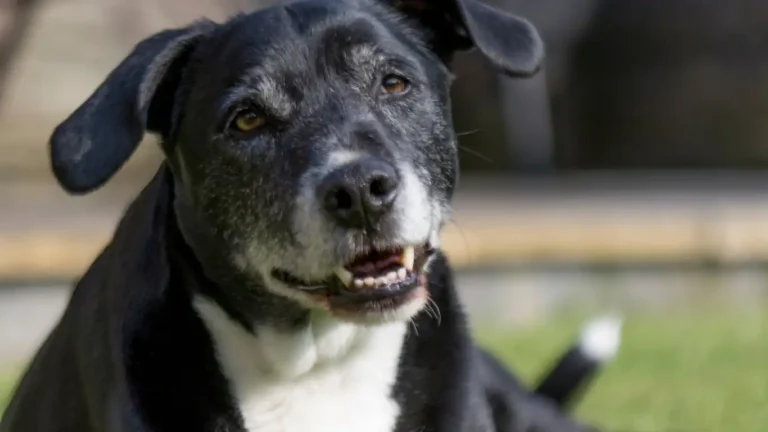Signs You’re Missing: How to Recognize Pain Symptoms in Older Dogs
As a Veterinary Technician and Nutrition Specialist, I’ve seen countless pet parents miss early signs of discomfort in their senior pups—not because they don’t care, but because our furry companions are experts at hiding their pain. That’s why it’s so important to learn how to recognize pain symptoms in older dogs before they become serious. It’s something I talk about with clients all the time. After all, if your dog isn’t limping or crying, they must be fine… right? Not exactly. Pain in senior dogs can be subtle, sneaky, and easy to misinterpret. Let’s break it down in a way that actually helps you help your dog feel better—without needing a degree in vet medicine.
Subtle Signs Your Senior Dog Might Be in Pain

Behavioral Changes That Often Go Unnoticed
When your dog starts acting “off,” it’s easy to chalk it up to age or mood. But I always tell clients: Changes in behavior are red flags waving right in front of you. Your pup might not be yelping, but things like:
- Withdrawing from family activities
- Sleeping more than usual—or less
- Becoming suddenly clingy or anxious
- Showing irritability when touched
These can all be signs of chronic pain. I once had a sweet old Lab named Daisy who stopped wanting to cuddle with her owner. Turned out, she had arthritic hips, and laying in certain positions made her uncomfortable. It’s these small changes that tell a big story.
Decreased Mobility Isn’t Just “Old Age”
Yes, older dogs naturally slow down, but there’s a difference between aging and hurting. If your dog:
- Struggles to get up or lay down
- Slips on floors they used to navigate easily
- Hesitates at stairs or won’t jump on the couch anymore
—don’t just assume it’s normal. That hesitation? It could be because every step hurts. I remember working with a senior Golden Retriever who wouldn’t go outside to potty anymore. The owner thought she was becoming lazy, but turns out, it was her joints screaming with every step. Once we managed her pain, she was back to exploring the yard like a pup again.
Why Recognizing Pain Early Is a Game Changer

Pain Isn’t Just Physical—It Affects the Whole Dog
Unmanaged pain can lead to weight gain (due to inactivity), loss of appetite, and even depression in dogs. Yes, dogs get depressed. And they won’t show it with tears but with low energy, disinterest in play, or changes in personality. As someone who focuses on both veterinary care and nutrition, I’ve seen how untreated pain can spiral into other health problems—especially digestive issues, which many people don’t connect to discomfort. But stress hormones caused by pain can absolutely mess with gut health.
Your Dog Trusts You to Be Their Voice
I always say: If you think something’s off, you’re probably right. You know your dog better than anyone. So if their habits shift—even slightly—trust your gut. Recognizing the pain symptoms in older dogs early means better treatment options, improved quality of life, and in many cases, extending the time you get to spend together.
Common Conditions That Cause Pain in Senior Dogs

Arthritis and Joint Disease
This is the big one. If your senior dog is slow to rise, stiff after naps, or avoids activities they used to love, arthritis could be the culprit. It’s incredibly common, and in many cases, manageable with diet, supplements, and medications. I’ve seen amazing turnarounds just by adding anti-inflammatory nutrients like omega-3s or switching to joint-supportive food formulas.
Dental Pain (and Why It’s So Overlooked)
I can’t even count how many dogs I’ve seen hide tooth pain like it’s their job. Even with rotting teeth or infected gums, many dogs continue eating (albeit carefully) and don’t show obvious signs. Watch for bad breath, drooling, chewing on one side, or dropping kibble—those can be huge clues.
And here’s the thing: pain doesn’t have to be loud. Sometimes it’s just a whisper—if you’re not tuned in, you’ll miss it.
Less Obvious Sources of Pain You Might Be Missing

Neurological Pain and Nerve Issues
This one’s tricky. I had a case where an older German Shepherd was brought in because she was “walking funny.” The client thought it was arthritis—but it turned out to be a spinal issue causing nerve pain. Her gait was wobbly, her back legs were weak, and she hesitated before climbing stairs. If your dog shows these signs, it might be more than just sore joints. Neurological issues like intervertebral disc disease or even degenerative myelopathy can mimic simple stiffness but require totally different management.
Chronic Digestive Discomfort
We usually associate pain with bones and muscles, but GI issues? They can be sneaky sources of chronic discomfort too. I’ve worked with several senior dogs who seemed lethargic and grumpy—turns out, they were dealing with low-grade pancreatitis or chronic gastritis. These conditions often cause bloating, nausea, and abdominal pain, which can absolutely impact a dog’s mood and appetite.
Watch for:
- Licking the air or lips repeatedly
- Restlessness, especially after meals
- Stretching in a “prayer pose” and staying there longer than usual
If you’re seeing these little behaviors, your dog might be trying to tell you their tummy hurts. It’s wild how something so internal can affect their whole vibe.
How Nutrition Can Play a Role in Pain Management

The Power of Anti-Inflammatory Diets
One of my favorite ways to help aging dogs feel better—without going straight to meds—is through targeted nutrition. Foods high in omega-3 fatty acids, glucosamine, chondroitin, turmeric, and green-lipped mussel can naturally ease inflammation. I once worked with a Beagle who had early-stage arthritis. After switching her to a vet-formulated joint support diet, we saw real improvement in just a few weeks—less limping, more tail wags, and even zoomies (senior-style, of course).
Why Senior Dogs Need Gut-Supportive Nutrition
As dogs age, their digestive system becomes less efficient. That can lead to more inflammation, food intolerances, and nutrient deficiencies—all of which make chronic pain worse. Feeding highly digestible, whole-food-based meals with added probiotics or digestive enzymes can make a world of difference. A happy gut supports better immunity, reduces discomfort, and helps their bodies recover more easily.
Pro tip: Avoid fillers, artificial preservatives, and low-quality protein sources. Senior dogs don’t have time for junk food—neither do their joints.
What You Can Do at Home to Help

Create a Comfortable Environment
One of the simplest things you can do? Make their home life easier. A few quick wins I’ve seen help senior dogs immediately:
- Add non-slip rugs or yoga mats to slick floors
- Elevated food and water bowls to avoid neck strain
- Orthopedic or memory foam beds placed away from drafts
- Portable ramps or stairs for getting on furniture or into the car
Even a heating pad on low (always supervised!) can be magic for achy hips. I’ve recommended this to dozens of clients—it’s an easy, low-cost way to give relief, especially during colder months when stiffness gets worse.
Consistency with Low-Impact Exercise
It might seem counterintuitive, but too much rest can make pain worse. Gentle, consistent movement helps keep joints lubricated and muscles strong. Think short walks, light play, or swimming if your dog enjoys it. I used to rehab a senior Spaniel who loved water therapy—she looked like a little sea otter in her float vest, and it kept her arthritis from progressing too quickly.
Just don’t overdo it. If your dog is panting heavily, dragging their limbs, or seems wiped out after an activity, scale back. Think quality over quantity.
When to See Your Vet (and What to Ask)

Don’t Wait for Obvious Signs
By the time a dog is visibly limping or yelping in pain, things have probably been building for a while. Early intervention is key. If you notice even mild changes in movement, appetite, behavior, or posture—bring it up at your next vet visit. And be specific! Say things like:
- “She’s sleeping more but still seems tired.”
- “He stopped going up the stairs but still jumps on the couch.”
- “I noticed she licks her paws a lot at night.”
These little observations help your vet make more accurate assessments. It’s also a good idea to ask about pain scoring or quality of life scales—they’re tools we use to measure subtle changes that might otherwise get brushed off.
And hey—if you ever feel dismissed or unheard, advocate for your dog. You’re their voice, their advocate, their home base. You know when something’s off. Trust that instinct. I’ve had so many clients push for second opinions and thank themselves later.
Integrating Pain Management into Daily Life

Building a Daily Routine That Supports Comfort
So you’ve identified some signs of pain in your senior dog—what now? The good news is, with a little consistency and awareness, you can make huge strides in improving their daily quality of life. I always recommend setting up a predictable routine. Dogs thrive on structure, and for those dealing with chronic pain, knowing what to expect each day can reduce stress (which only worsens discomfort).
Start with gentle stretching or a short walk in the morning, followed by meals with joint-support supplements if they’ve been recommended. Keep activity light but regular. Midday is great for interactive, low-impact enrichment like puzzle feeders or light tug games—mentally engaging, physically gentle. And by evening, it’s all about wind-down: cozy resting areas, massage (yes, massage!), and warmth.
Comfort Doesn’t Always Come in a Pill Bottle
Look, medication absolutely has its place. I’ve helped countless clients work with their vets to find the right pain meds, whether that’s NSAIDs, gabapentin, or other options. But pain management isn’t just about prescriptions. I’ve seen amazing results with alternative therapies like:
- Acupuncture – surprisingly well tolerated, especially for joint or nerve pain
- Cold laser therapy – promotes circulation and healing in sore spots
- Hydrotherapy – perfect for dogs who enjoy water and need weight-free movement
These modalities work best when combined with a well-balanced approach—think of it as a holistic toolkit, not a one-size-fits-all fix.
Keeping Your Dog Emotionally Healthy Too

Pain Isn’t Just Physical—Let’s Talk Emotional Wellness
One thing I’ve learned through years of working with pets and their humans is this: emotional health and physical pain go hand in hand. Dogs who are uncomfortable often get anxious or withdrawn. I’ve seen outgoing dogs become quiet, and confident pups turn snappy—not because they’re “bad,” but because they’re hurting and confused.
Make time each day to simply connect. Sit on the floor with them, speak softly, brush them if they like it. These moments not only build trust—they also help you notice subtle changes in posture, muscle tension, or mood that could signal increasing pain.
Bonus Tip: Music therapy actually works! Calming tunes at low volume (especially classical or acoustic guitar) can relax both of you during rest or massage time. Try it during thunderstorms or stressful events, too—it can lower cortisol levels naturally.
How to Recognize When Pain is Affecting Quality of Life
At some point, the question shifts from “Is my dog in pain?” to “How much is the pain affecting their ability to enjoy life?” That’s a hard place to be as a pet parent—I’ve been there myself. One of my own senior pups, Milo, was the toughest little guy. He’d try to hide it, but I knew when he stopped greeting me at the door, something was off. We made adjustments, brought in palliative care, and those final months were filled with peace and dignity.
Here are a few quality-of-life markers to watch:
- Are they eating and drinking normally?
- Do they still find joy in anything—walks, toys, cuddles?
- Is their pain being managed well enough for restful sleep?
- Are they avoiding favorite spots due to physical limitations?
If you’re unsure, ask your vet about using a pain scale or quality-of-life checklist. These tools can help you make informed decisions—ones based on love, not just emotion.
Final Thoughts from My Experience
Here’s the truth: learning how to recognize pain symptoms in older dogs isn’t about being a perfect pet parent—it’s about being a present one. Nobody notices everything right away. But if you’re watching, listening, and trusting your gut, you’re already doing an amazing job. In my years as a Veterinary Technician and Nutrition Specialist, I’ve seen what a difference awareness makes. I’ve watched dogs who seemed “too old” to bounce back find new energy once their pain was finally addressed.
So keep asking questions, keep learning, and most importantly—keep showing up for your dog, even when they can’t say what hurts. You’re their everything.
References
- American Veterinary Medical Association
- American College of Veterinary Surgeons
- American Kennel Club
- The Ohio State University College of Veterinary Medicine
- PetMD
Disclaimer
This content is for informational purposes only and does not replace professional veterinary advice. Always consult your veterinarian before making changes to your dog’s health, nutrition, or treatment plan.






